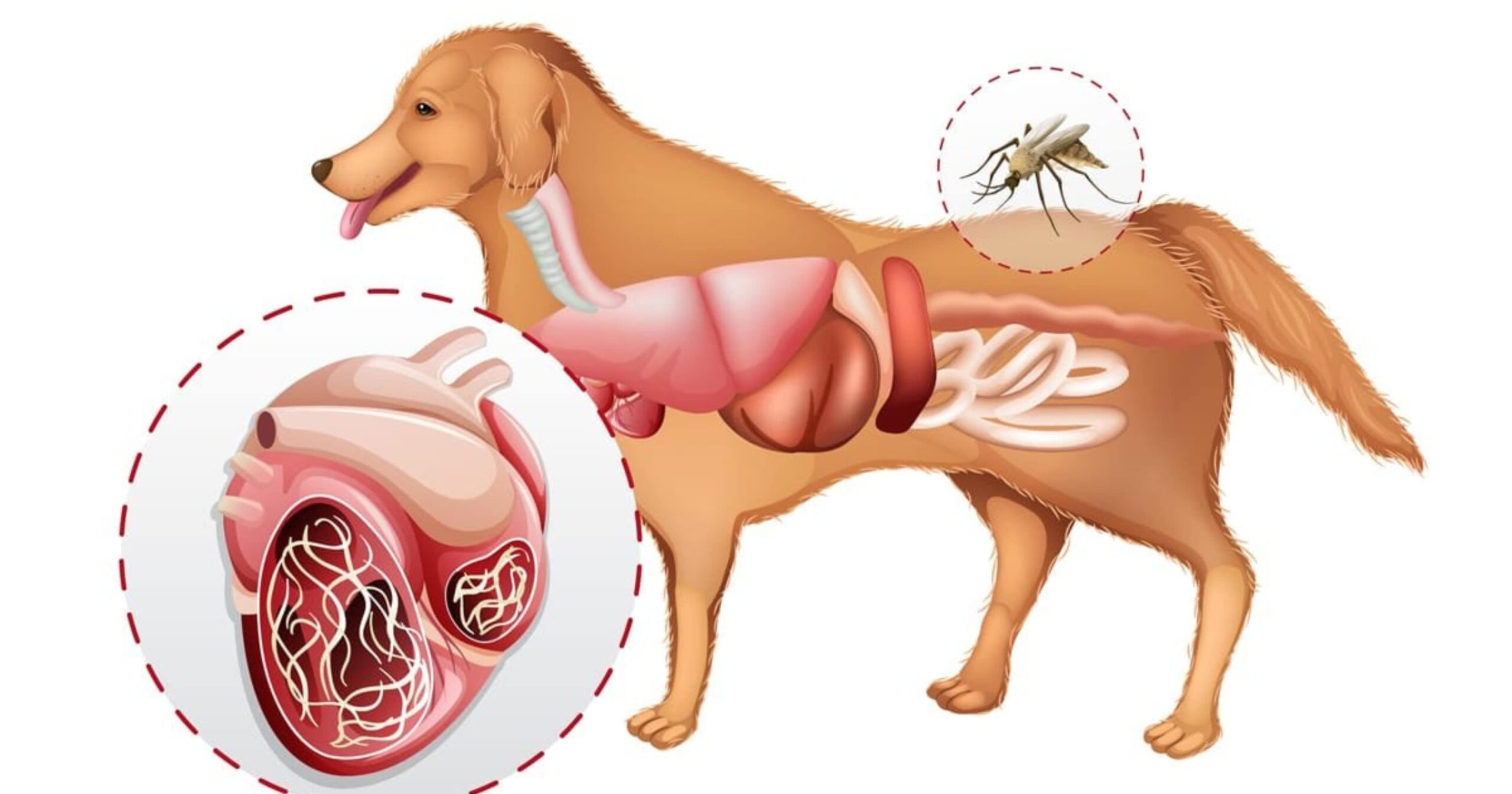How Long Can A Dog Have Worms Before It Dies? Roundworms have the potential to reach lengths of up to seven inches and inhabit the small intestine, posing a life-threatening risk to young dogs.
The presence of worms in your beloved furry companion is undeniably unsettling, and the consequences for your pet’s health can be genuinely concerning. From noticeable weight loss and weakness to the development of anemia and the potential for heart failure, worms pose a significant threat to your pet’s well-being. In the most severe cases, they can even prove fatal.
Fortunately, there’s reassuring news: worm infestations are highly preventable, and safeguarding your pet against these troublesome invaders is a straightforward process. Let’s take a deeper dive into the inner workings of your dog’s body to understand how these parasites can harm our canine friends and explore effective measures to ensure your dog’s safety and well-being.
Table of Contents
ToggleDetecting Worms in Your Dog: Unveiling the Clues
Identifying a worm infestation in your canine companion can be a nuanced process, as the telltale signs may vary depending on the type of worm responsible.
Among the most difficult culprits is heartworm (Dirofilaria immitis), transmitted through mosquito bites, with the potential to lead to heart and lung diseases.
Shockingly, severe heartworm infections can remain asymptomatic, making early detection challenging.
Nevertheless, if your dog exhibits persistent coughing, struggles with physical activity, experiences breathing difficulties, or undergoes unexplained weight loss, these could signal a heartworm infestation.
Intestinal worms also pose a significant threat to your pup’s well-being, with four primary types to watch for:
- Roundworm (Toxocara canis, Toxascaris leonina): Symptoms may include bloating, abdominal pain, diarrhea, and vomiting.
- Hookworm (Ancylostoma caninum): These blood-sucking parasites can lead to bloody diarrhea, weight loss, weakness, and anemia.
- Tapeworm (Dipylidium caninum): If your dog starts scooting its rear along the ground, that’s a clear indicator of a tapeworm infection. Additional symptoms may include diarrhea, weight loss, and a patchy coat.
- Whipworm (Trichuris vulpis): Whipworm infestations often manifest as diarrhea, weight loss, overall weakness, and anemia in dogs.
Stay vigilant and attuned to these signs, as early detection and prompt treatment are crucial in ensuring your furry friend’s health and happiness.
Related Posts:
5 Golden Rules of Dog Training: What and How
How Much Are Australian Shepherds? The Answer May Shock You
15 Best Boat Dogs That Will Make You Fall in Love with Sailing

Deciphering the Science Behind Canine Worms
In our quest to unravel the intricate science of the five most prevalent worms afflicting dogs, let’s embark on a journey to dissect each of these parasites individually.
- Heartworm: Transmitted via infected mosquitoes, heartworms predominantly thrive in warm and humid regions. Within your pet’s heart and lungs, these parasites can stretch up to an astonishing 12 inches in length, wreaking havoc on your furry friend’s internal organs. It’s worth noting that heartworm disease has made its presence felt in all 50 US states, affecting an estimated 1 million dogs annually.
- Roundworm: Frequently diagnosed in puppies, roundworms are commonly transmitted from the mother to her offspring before birth. These insidious worms infest nearly 90 percent of pups under three months of age, reaching lengths of up to seven inches. They reside within the small intestine and pose a significant threat, particularly to puppies.
- Hookworm: These bloodthirsty parasites thrive in your dog’s small intestine, extracting vital fluids and posing a double threat – both disgusting and dangerous to your pet. Hookworms can also migrate to other parts of the body, making them particularly hazardous for puppies.
- Tapeworm: Within the realm of tapeworms, there exist two distinct varieties: flea tapeworm and hydatid tapeworm. Flea tapeworms, the more prevalent of the two, are transmitted when dogs ingest fleas that have feasted on tapeworm eggs.
- Whipworm: Comparatively diminutive in size, whipworms typically grow to a modest length of one to two inches. Their primary mode of transmission occurs when a dog ingests contaminated substances. Once established in the large intestine, whipworms become inconspicuous, often eluding detection in feces, thereby complicating the diagnosis of whipworm infections.
Managing Worms in Dogs: Treatment and Proactive Prevention
Addressing a dog’s intestinal worm infestation often proves to be more straightforward than one might imagine.
With guidance from your veterinarian, administering a prescribed worming tablet to your pet can effectively eliminate these troublesome parasites.
In cases where complications have arisen, such as anemia, additional treatments may be necessary.
However, when it comes to heartworms, the situation becomes more serious.
Upon a confirmed heartworm disease diagnosis, your pet will require a restricted exercise regimen until successful treatment is achieved.
Your veterinarian will initiate a monthly preventive regimen to target immature heartworms and prescribe a 30-day course of antibiotics to combat bacteria living within the heartworms. Only after this can an adulticide be administered to eliminate the mature heartworms.
In the realm of canine health, prevention consistently trumps cure, especially in the context of dog worms. Fortunately, preventive measures are straightforward.
Heartworm preventives come in various forms, including monthly chewables, topical applications, and semi-annual injections.
Some of these preventives also offer protection against hookworms, roundworms, whipworms, and tapeworms, although additional periodic administration of intestinal worms may be advisable.
By diligently adhering to a preventive approach and staying committed to your pet’s well-being, you can ensure that worms and the potential health risks they pose will never become a concern for your beloved dog.

Understanding Different Types of Worms in Dogs
Various types of worms can infest dogs, including heartworms, roundworms, hookworms, whipworms, and tapeworms. Each type poses unique risks and symptoms, making it crucial to understand their differences.
Symptoms to Watch Out For
Common symptoms of worm infestation include weight loss, vomiting, diarrhea, and visible worms in stool. Early detection can prevent serious health complications.
Treatment Options for Dogs with Worms
Treatment options range from oral medications to injections. Your vet can recommend the best course of action based on the type and severity of the infestation.
How Long Can a Dog Live with Worms Before Dying
It’s difficult to determine an exact timeline, as it depends on the type of worm and the dog’s overall health. However, severe infestations can prove fatal if left untreated.

Prevention Tips to Keep Your Dog Healthy and Free from Worms
Regular vet check-ups, maintaining a clean environment, and administering preventive medications are key to safeguarding your dog from worm infestations.
When to Seek Veterinary Care for Your Dog’s Worm Infestation
Seek veterinary care at the first sign of potential worm infestation. Early treatment can prevent serious health issues and ensure a swift recovery.
Conclusion
In conclusion, the well-being of your canine companion is under continuous threat from various forms of worm infestation. The timeline before significant health consequences arise can vary, making vigilant monitoring of symptoms, regular vet check-ups, and preventive measures critical. It’s essential to understand the different types of worms, their respective risks, and appropriate treatments to ensure your dog’s health and longevity. Remember, early detection and treatment are your best allies in the fight against these unseen threats. Make worm infestation a concern of the past and secure a healthier future for your beloved pet.
FAQs
What are the potential health risks if my dog has worms?
Dogs infested with worms can suffer from weight loss, vomiting, and diarrhea. They might also show visible worms in their stool. If left untreated, severe infestations can lead to serious health complications and even be fatal.
How often should I take my dog to the vet for a worm check-up?
Regular vet check-ups are key in preventing worm infestations. The frequency of these visits depends on your dog’s lifestyle, age, and overall health. However, annual check-ups are generally recommended. If you notice any symptoms of worm infestations, seek veterinary care immediately.
Can all types of worms be prevented through medication?
Preventive medications can play a crucial role in keeping your dog free from worm infestations. However, their effectiveness may vary depending on the type of worm. Your vet can provide the most suitable preventive measures based on the specific needs of your dog.































